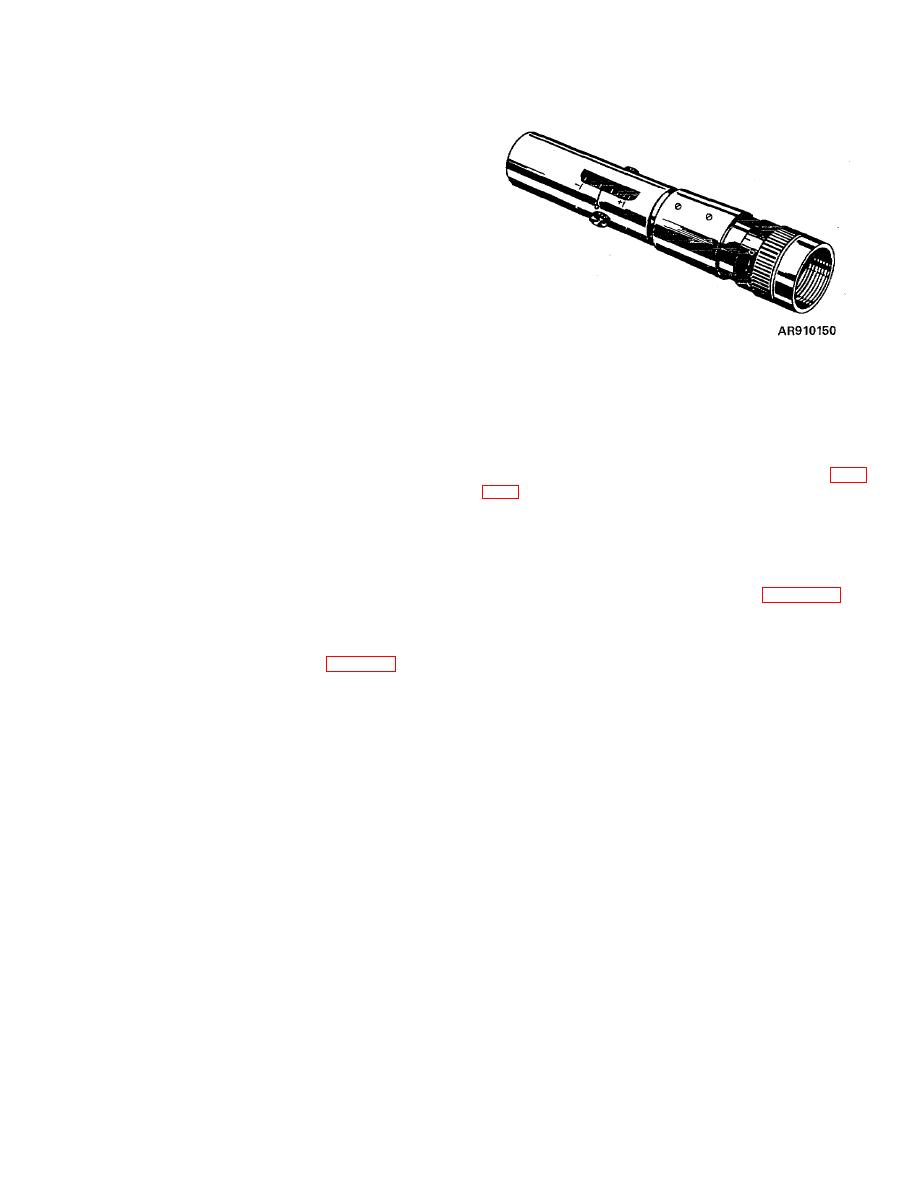 |
|||
|
|
|||
|
|
|||
| ||||||||||
|
|
 TM 9-258
eyepiece to a single focus setting at -0.75 to -1.0 diopter.
available for checking zero diopter setting.
A single focus setting will be satisfactory to any observer
whose eye correction is not too great. In a low-power
instrument, the objective is short focal length; therefore,
the image plane shift is small when target distance
changes unless the target is moved very close.
e. High-Powered Instruments. In high-power
instruments (more than 4x) the diopter movement is
useful because the eye relief frequently is too short
(excepting in rifle scopes and gunsights) to permit view
of full field while wearing spectacles. If the user's
defective sight is not caused by astigmatism (is either
farsighted or nearsighted) and the correction, required is
within the range of the 'diopter movement, the diopter
adjustment permits adjustment of the eyepeice to correct
for his defective vision. This eliminates the necessity for
Figure 5-22. Dioptometer
spectacles while using the instrument. In a high-power
instrument not having a reticle, the diopter movement
5-16.
Collimation.
permits focusing the eyepiece on the different image
a. Definition. Collimation is the alinement of
planes, resulting when the instrument is used at all
ranges, thus focusing the instrument for the different
the optical and mechanical axes of an instrument and
ranges. An example of this is the observation telescope
necessitates a reticle in the collimating telescope so it
which can be used from approximately 50 feet to infinity.
can be used as a telescopic sight. (for reticles, see para
f.
Diopter Scale. The diopter scale on an
eyepiece is calibrated in units indicating the movement of
fixed collimating telescope and the instrument to be
the eyepiece necessary to effect a change of 1 diopter in
collimated, and adjusting accordingly.
b. Lens Decentration. Lens decentration is
the emergent light. For example, at plus 1 the angular
convergence is the same as with a 1-power lens (focal
utilized frequently in collimating optical systems,
length of 1 meter) and the rays will focus or cross at 1
especially binocular instruments, which usually employ
meter behind the eyepiece. At minus 1 the angular
objectives mounted in eccentric rings (para 4-18) to
divergence is such that the rays, if extended back into
permit movement in any direction across the axis. If a
the instrument, would cross at 1 meter forward of the
lens is decentered (moved across the axis of the system)
eyepiece.
it will cause an image shift in the same direction. The
optical center seldom coincides with the exact
geometrical center of a lens so that an image shift
precision instrument useful in determining accurately the
frequently will result from revolving a lens in its cell. In
diopter setting of another instrument. It is placed
fact, disturbing any lens in a collimated system will
between the eye and the instrument to be checked. The
necessitate collimation of the system again as any lens
focusing sleeve of the dioptometer is then adjusted until
which fits freely enough to facilitate removal will almost
the field is in sharp focus. The diopter setting of the
surely not go back in its exact position.
instrument being checked is then read from the focusing
c. Prismatic. If prisms are employed in a
sleeve (usually calibrated in 0.1 diopter) of the
system, collimation also can be affected either by sliding
dioptometer. Set at zero diopter the dioptometer can be
prism parallel to the plane of reflection (causing an
used to check-the accuracy of the zero diopter setting in
image shift in same direction) or by tipping prism and
the collimating telescope itself which is commonly
plane of reflection (shifting image in same direction).
5-11
|
|
Privacy Statement - Press Release - Copyright Information. - Contact Us |